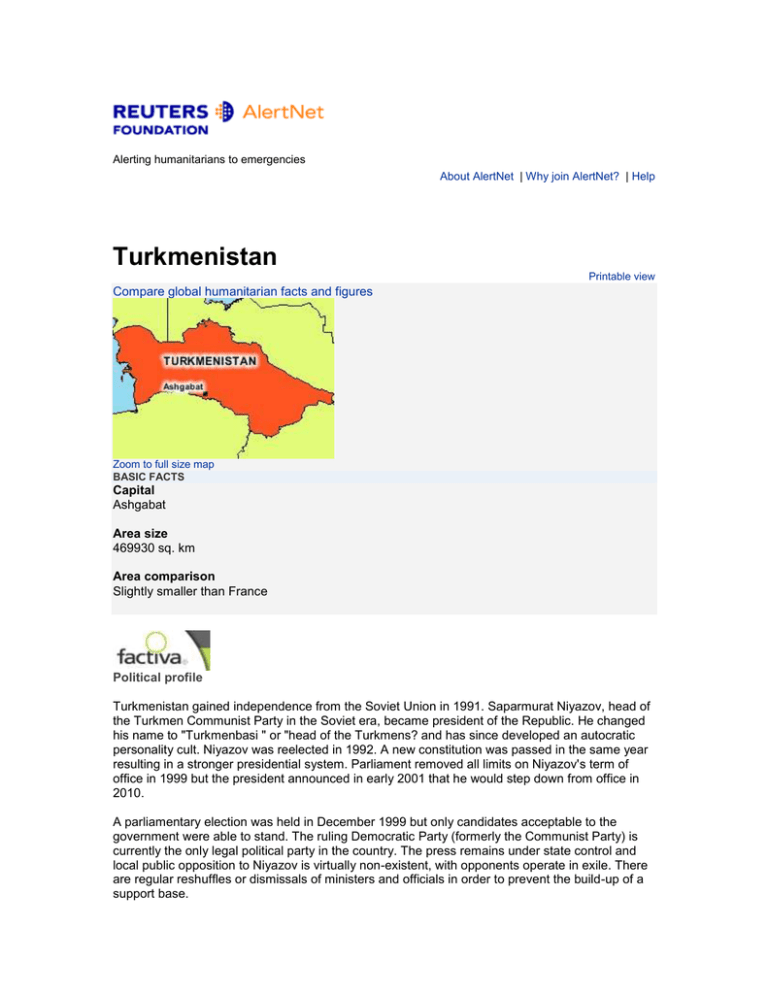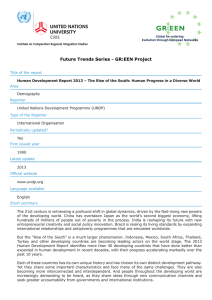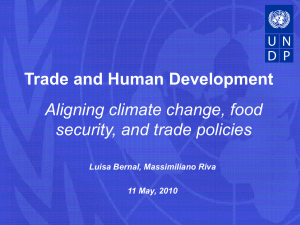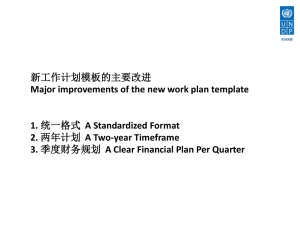
Alerting humanitarians to emergencies
About AlertNet | Why join AlertNet? | Help
Turkmenistan
Printable view
Compare global humanitarian facts and figures
Zoom to full size map
BASIC FACTS
Capital
Ashgabat
Area size
469930 sq. km
Area comparison
Slightly smaller than France
Political profile
Turkmenistan gained independence from the Soviet Union in 1991. Saparmurat Niyazov, head of
the Turkmen Communist Party in the Soviet era, became president of the Republic. He changed
his name to "Turkmenbasi " or "head of the Turkmens? and has since developed an autocratic
personality cult. Niyazov was reelected in 1992. A new constitution was passed in the same year
resulting in a stronger presidential system. Parliament removed all limits on Niyazov's term of
office in 1999 but the president announced in early 2001 that he would step down from office in
2010.
A parliamentary election was held in December 1999 but only candidates acceptable to the
government were able to stand. The ruling Democratic Party (formerly the Communist Party) is
currently the only legal political party in the country. The press remains under state control and
local public opposition to Niyazov is virtually non-existent, with opponents operate in exile. There
are regular reshuffles or dismissals of ministers and officials in order to prevent the build-up of a
support base.
Turkmenistan remains a poor country despite its vast natural-gas (fifth largest reserves in the
world) and oil riches. Until end of 1993, with its economy having a boost from higher prices for oil
and gas, it experienced less economic disruption than other former Soviet states. But in 1994,
Russia?s refusal to export Turkmen gas to hard currency markets and increasing debts of its
major customers in the former Soviet Union for gas deliveries resulted in a sharp fall in industrial
production. In April 2003 the two countries signed a 25-year gas deal. Turkmenistan has taken a
cautious approach to economic reform, relying on its gas and cotton sales to sustain its inefficient
economy. However, its recent cooperation with the international community in transporting
humanitarian aid to Afghanistan may bring about a change in the atmosphere for foreign
investment, aid and technological support. Its reserves could also provide a boom if extraction
and delivery projects can be worked out. Turkmenistan is also currently the only former Soviet
republic not to have attempted to follow an IMF programme.
Russia has been in dispute with Turkmenistan over its ending of dual citizenship rights for ethnic
Russians. A bilateral commission has been established to ensure that the 100,000 ethnic
Russians living in Turkmenistan do not face discrimination, although many have decided to leave
the country.
Last updated: 2006-06-16 10:47:00
DISPUTES & CONTROVERSIAL ISSUES
(1) Turkmenistan, Kazakhstan, Tajikistan and Uzbekistan wrestle with sharing limited water resources and
regional environmental degradation caused by the shrinking of the Aral Sea (2) multilaterally-accepted
Caspian Sea seabed and maritime boundaries have not yet been established in the Caspian - Iran insists on
division of Caspian Sea into five equal sectors while Azerbaijan, Kazakhstan, Russia and Turkmenistan
have generally agreed upon equidistant seabed boundaries (3) Azerbaijan and Turkmenistan await ICJ
decision to resolve sovereignty dispute over oil fields in the Caspian Sea
PEOPLE
Language
The official languge is Turkmen, but Russian is also spoken.
Source: New Internationalist World Guide 2005/2006
Population
2005 4.8
million
U.N. Department of Economic and Social Affairs (DESA) Population
Division (2004)
2004 4.9
million
U.N. DESA
2002 4.9
million
U.N. DESA
Future population estimates
6.8 million (2050 est)
Source: U.N. DESA (2004)
Ethnic groups
Turkmeni 77 percent, Uzbek nine percent, Russian seven percent, with smaller number of Kazakhs, Tatars
and others.
Source: NI World Guide 2005/2006
Religion
Predominantly Sunni Muslims (87 percent), with some Russian Orthodox Christians (six percent).
Unregistered religious activity is a criminal offence.
Source: NI World Guide 2005/2006
Percentage urban population
2003 45.4
percent
U.N. Development Programme (UNDP) Human Development Report
2005
2002 45 percent
UNDP - Human Development Report 2004
Year women granted right to vote
1927
Source: UNDP - Human Development Report 2005
Where two figures are shown, the first refers to a partial recognition of the right to vote and the second to the
year women received the right to vote on a universal and equal basis.
Net percentage of girls enrolled in primary education
No data available
Percentage of population under 15
2003
33.5 percent
UNDP - Human Development Report 2005
2002
34.6 percent
UNDP - Human Development Report 2004
USEFUL INFORMATION
Time zone
GMT +5
Climate description
Severely continental. Very hot summers and cold winters.
Currency
Manat
Telephone dialling code
(+) 993
Driving (left/right)
Right
STANDARD OF LIVING
Average life expectancy
62.4 years (2003 )
Source: UNDP - Human Development Report 2005
Life expectancy - male
58.3 years (2003)
Source: UNDP - Human Development Report 2005
Life expectancy - female
66.8 years (2003)
Source: UNDP - Human Development Report 2005
Infant mortality
2003
79 per 1,000 live births
UNDP - Human Development Report 2005
2002
76 per 1,000 live births
UNDP - Human Development Report 2004
Child mortality - deaths before the age of five
2003
102 per 1,000 live births
UNDP - Human Development Report 2005
2002
98 per 1,000 live births
UNDP - Human Development Report 2004
Births attended by skilled personnel
97 percent (1995-2003)
Source: UNDP - Human Development Report 2005
Maternal mortality
31 per 100,000 live births (2000)
Source: UNDP - Human Development Report 2005
Human development index (HDI rank)
2005
97
UNDP - Human Development Report 2005
2004
86
UNDP - Human Development Report 2004
Percentage of children under weight for age (under age 5)
12 percent (1995-2003 )
Source: UNDP - Human Development Report 2005
Percentage of undernourished population
9 percent (2000-2002 average)
Source: UNDP - Human Development Report 2005
Population with access to improved water
71 percent (2002)
Source: UNDP - Human Development Report 2005
Population with access to improved sanitation
62 percent (2002)
Source: UNDP - Human Development Report 2005
Literacy - average
98.8 percent (2003)
Source: UNDP - Human Development Report 2005
Literacy - male
99.3 percent (2003)
Source: UNDP - Human Development Report 2005
Literacy - female
98.3 percent (2003)
Source: UNDP - Human Development Report 2005
Landlines telephones
2004 77 per 1,000 people
International Telecommunication Union (ITU) 2005
2003 77 per 1,000 people
UNDP - Human Development Report 2005
2002 77 per 1,000 people
UNDP - Human Development Report 2004
Cellular telephone subscribers
2 per 1,000 people (2004)
Source: ITU 2005
Internet users
2004
7 per 1,000 people
ITU 2005
2003
4 per 1,000 people
ITU 2004
2002
1.7 per 1,000 people
UNDP - Human Development Report 2004
Transparency International corruption ranking (1=least corrupt, 145=most corrupt)
2005
155 (joint)
Transparency International
2004
133
Transparency International
Signatory of International Convention on the Prevention and Punishment for the crime of Genocide
No (1948)
Source: UNDP - Human Development Report 2005
Signatory of the Convention against Torture and Other Cruel, Inhuman or Degrading Treatment or
Punishment
Yes (1984)
Source: UNDP - Human Development Report 2005
Signatory of the Convention on the Rights of the Child
Yes (1989)
Source: UNDP - Human Development Report 2005
ECONOMY & AID
Percentage of population living on less than US$1 a day
No data available percent
GNI per capita, Atlas method
No data available current US$
GDP
2004
6.2 current US$ billions
World Bank Data Profile Tables 2006
2003
5.8 current US$ billions
World Bank Data Profile Tables 2006
Annual GDP growth
No data available percent
Annual inflation
No data available percent
Share of income or consumption (poorest 10 percent)
2.6 (2003)
Source: UNDP - Human Development Report 2005
Share of income or consumption (richest 10 percent)
31.7 (2003)
Source: UNDP - Human Development Report 2005
HEALTH
Physicians
1990-2004
317 per 100,000 people
UNDP - Human Development Report 2005
1990-2003
300 per 100,000 people
UNDP - Human Development Report 2004
Percentage HIV+ (adults aged 15-49)
2005 <0.1 percent
U.N. Programme on HIV and AIDS (UNAIDS) 2006
2003 No data available percent
Malaria
Risk from P.vivax from June to October in some villages in the south eastern part of the country in Mary
district. (2004-2005)
Source: U.N. World Health Organisation (WHO) 2005
TB cases
2004
65 per 100,000 people
WHO 2006
2003
75 per 100,000 people
WHO 2005
2002
85 per 100,000 people
WHO 2004
CONFLICT & MIGRATION
Number of refugees originating here
2005
820
Office of the U.N. High Commissioner for Refugees (UNHCR)
2004
812
UNHCR
2003
840
UNHCR
Number of refugees residing here
2005
11963
UNHCR
2004
13253
UNHCR
2003
13511
UNHCR
Number of internally displaced people\Estimate
No data available
Landmine casualties per year
2004
0
Landmine Monitor Report 2005
2003
0
Landmine Monitor Report 2004
Casualty figures may include both civilians and military personnel injured or killed by landmines and
unexploded ordnance.
Signatory to landmine convention?
Yes (1997 )
Source: Landmine Monitor Report 2005
Percentage of GDP spent on military
No data available percent
Percentage of GDP spent on education
No data available percent
Percentage of GDP spent on health
3.0 percent (2002)
Source: UNDP - Human Development Report 2005
AlertNet makes every effort to ensure statistics are updated from the relevant sources as soon as
they are available.
© 1998-2006 Reuters Limited. All rights reserved. Republication or redistribution of Reuters
content, including by framing or similar means, is expressly prohibited without the prior written
consent of Reuters. Reuters shall not be liable for any errors or delays in the content, or for any
actions taken in reliance thereon.





